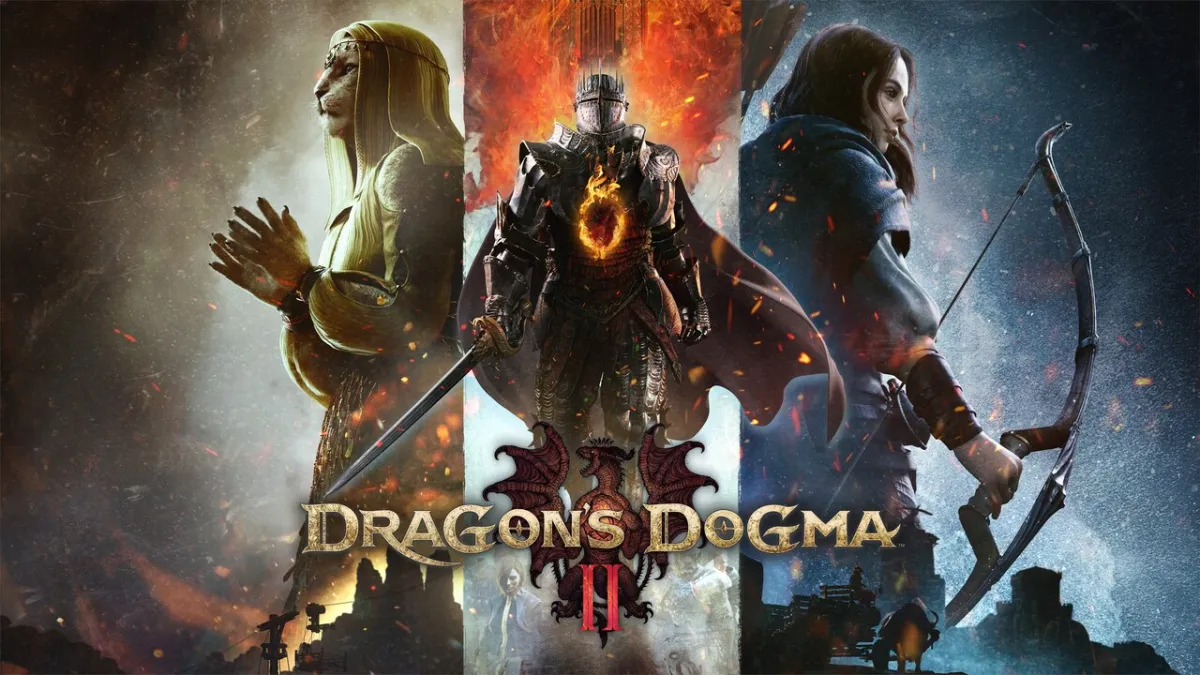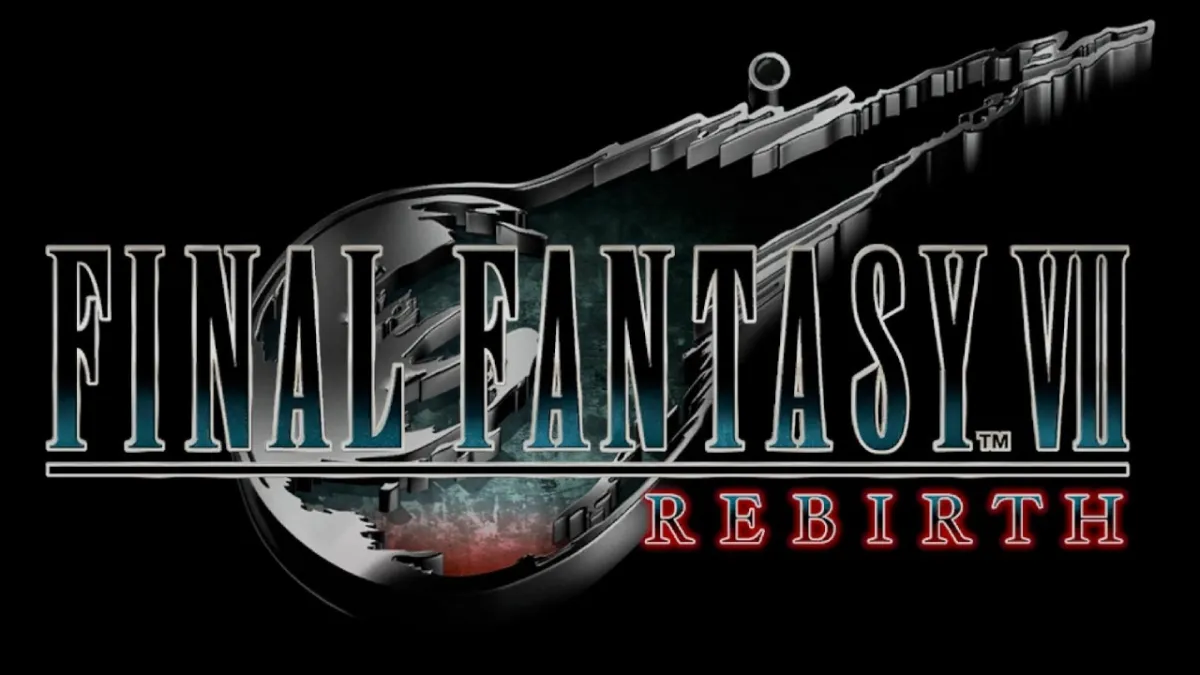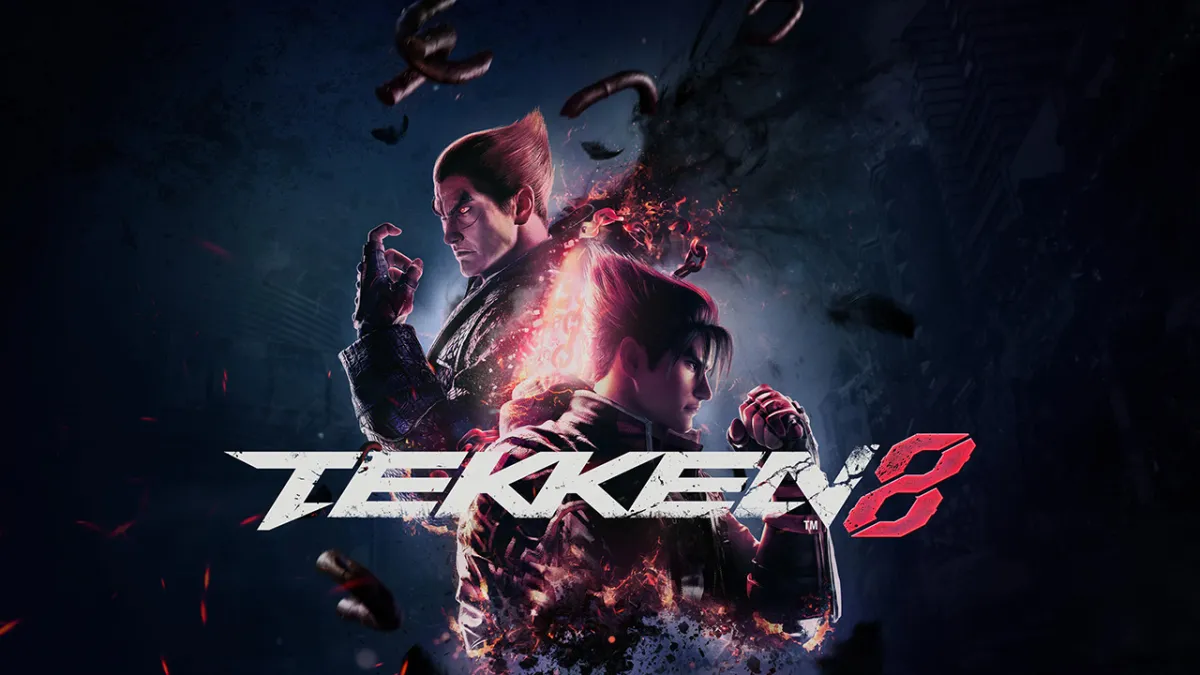Arc System Works has been developing robust, enduring arcade titles since the 1980s, and has proven to be a versatile developer across multiple genres. Their most impressive contributions, however, have typically belonged to the fighting genre. Arc System Works fighters are typically either original franchises like their long-running Guilty Gear and BlazBlue series, or their twists on popular franchises like Dragon Ball.
The Persona series was an interesting concept to adapt, first displayed in Persona 4 Arena, which debuted a decade ago, and lent its anime style and combat concepts well to a fighting game. Then, 1 year later, Arc System Works set out to top this accomplishment with Persona 4 Arena Ultimax. The game was first released to arcades in 2013 and consoles a year later, but is now releasing along with its latest updates and DLC on PC, PlayStation 4, and Nintendo Switch on March 17, 2022.

P4AU is a 2D fighting game with anime visuals that features distinctive characters that cater to different playstyles and boast varying gimmicks. It takes cues from its predecessor, Persona 4 Arena, although with significant balancing tweaks and overall seems geared toward being more competitive while remaining approachable to newcomers. Ultimax has the additional benefit of being the superior version while including the story of Arena, so you won’t miss out on the story content. It is a game made for the arcade, but with console players in mind at the same time, with streamlined moves, you can typically use for any characters, while combos tend to get more specific.
P4AU features a crossover between characters from Persona 3 (Shadow Operatives) and 4 (Investigation Team), working toward the same goal The characters engage in 1-on-1 combat and can summon their personas for aid in Arcade Mode, with each match’s winner determined by whoever wins 2 fights first. Additional modes include Story, Score Attack, and Golden Arena modes, as well as Versus for if you’re playing with a friend. Golden Arena and Story both feature 1-round battles, for smaller doses while giving you a taste of their other defining features. If you take the time to play each mode you’ll find them distinctively rewarding as ways to enjoy the game as a whole.

P4AU, which directly follows its predecessor Arena, takes place 3 months after the events of Persona 4. The P-1 Grand Prix has ended after the events of Arena, which was a tournament inside the parallel realm known as the Midnight Channel, and the Investigation Team is bonding during Golden Week. But this relative peace ends quickly, with ads showing for a new “P-1 Climax” event, with footage of captured Shadow Operatives being mounted on crosses, a one-hour warning of the world’s impending doom, and a blackout.
Inaba, the town in which the game takes place, is covered in a red fog, and the Investigation Team members remark on how similar this feels, to being inside the Midnight Channel. The entire area is blending in with locations and landmarks from Persona 3, mixing the worlds rendered in both games. The game’s cast spots a mysterious tower in the distance, appearing somehow over Yasogami High School, and they must fight through intricate shadow replicas of themselves and their allies and solve the mystery behind the bizarre occurrence. What follows is a ‘Game of Death’-like gauntlet wherein the protagonists must confront their shadows and ascend the tower to save their loved ones and the world.
An Anime Fighter With Signature Persona Flair
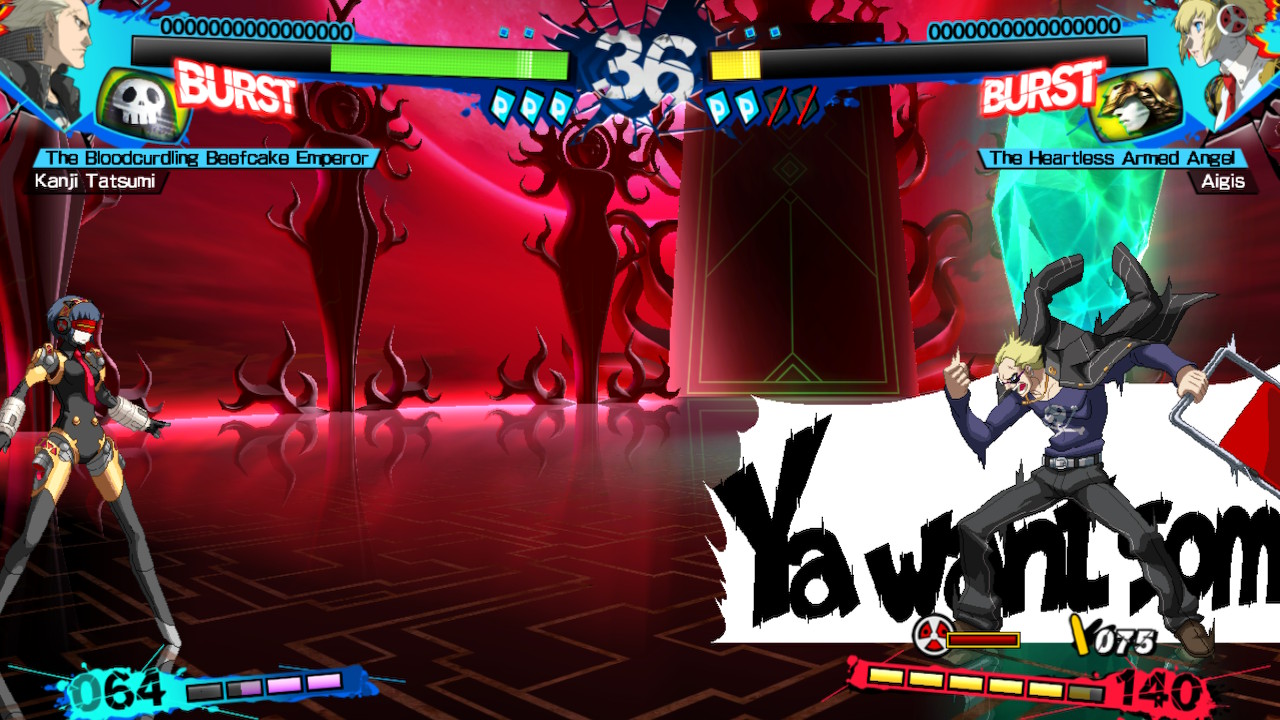
Arc System Works’ style lends itself well to Atlus’ sterling RPG franchise here. Not only do the visuals pop in the anime sprites with their over-the-top attacks and animations, but they’re also incredibly responsive and fun to play. It could easily have been a cash-grab but features a heavy, perhaps at times excessive, amount of story and lore being built around the returning and new characters featured in the game.
While the game is designed with its arcade roots proudly on display, it plays satisfyingly well on other consoles, as any of the modern hardware is easily able to handle this game. The developers did not endeavor to rename the buttons as they appear in the commands list (clearly an arcade pad layout) but the pause menu’s button settings option allows you to see which buttons stand in for which. The best part is, in place of having to push 2 buttons or more for attacks, the controller uses its additional buttons to make these moves easier to execute. Whether you’re an experienced player or a newcomer to this sort of game, its controls, and even special moves are rather easy to execute, prioritizing action above all else.
You can fight with weak or strong attacks from your character, and in all but one case, they have a persona who gets the same two types of attacks. When using your persona to attack, they are vulnerable to strikes from the opponent, and if hit, it can negate the attack. Depending on who you play as you’ll have a certain number of times this can happen before you’re temporarily unable to use them.
Beyond that, you can use special moves and tactics which often consume SP, essentially Skill Points, earned during combat either by striking blows, getting hit, or blocking attacks. Most of the characters also have shadow variants who can enter Shadow Frenzy states which lower the costs of skills, but your SP meter drains to zero in this state so you must act quick. The result of all these features is not messy but in fact, an intricate, deep fighter that rewards different playstyles before you even choose a particular character.
The Visuals

Ultimax uses the anime fighter trappings known across Arc System Works’ other developed works, and due to the eye-grabbing visual style of Persona being featured here, it looks great. The characters are animated satisfyingly well, with nuances like body language in response to hits or executing attacks and even facial expressions put on display. This is a game that puts to use the arcade fighter mechanics of its veteran developer, on top of a character-driven visually striking intellectual property.
The 2D fighter battles look sharp, with the anime character sprites brought to life by tons of animations and colorful attacks. The framerate of the actual battles is smooth, while the character animation is kept at the typical lower anime rates which helps make the characters’ expressiveness pop. You can customize your characters with different color skins, as well as those for your personas, and even put on custom glasses when you duke it out with the competition.
The backgrounds are striking renditions of the Midnight Channel and Inaba along with how it’s affected by the colliding worlds. They don’t feature any environmental feedback like in some contemporary fighters beyond bouncing your opponent off the walls and floors in battles but serve simply as a backdrop, which is fine. The strength and features of the fighting mechanics more than make up for this.
The Sound

Ultimax uses music across all of Persona 3 and 4’s main entries and spinoffs. The OST for this game includes tracks for each character along with other memorable themes which help layer on the Atlus charm for the game. Battles thus can be exciting and catchy to enjoy passively as a viewer or to fuel you as you fight for dominance as the player.
Sound effects including attacks, character quips, and special moves are rendered with clarity and help keep the energy up in matches. You feel the impact of successful attacks and simple touches like having navi characters cheering you on, or commentator Rise’s remarks at the end of fights, and they’re great touches.
The Characters
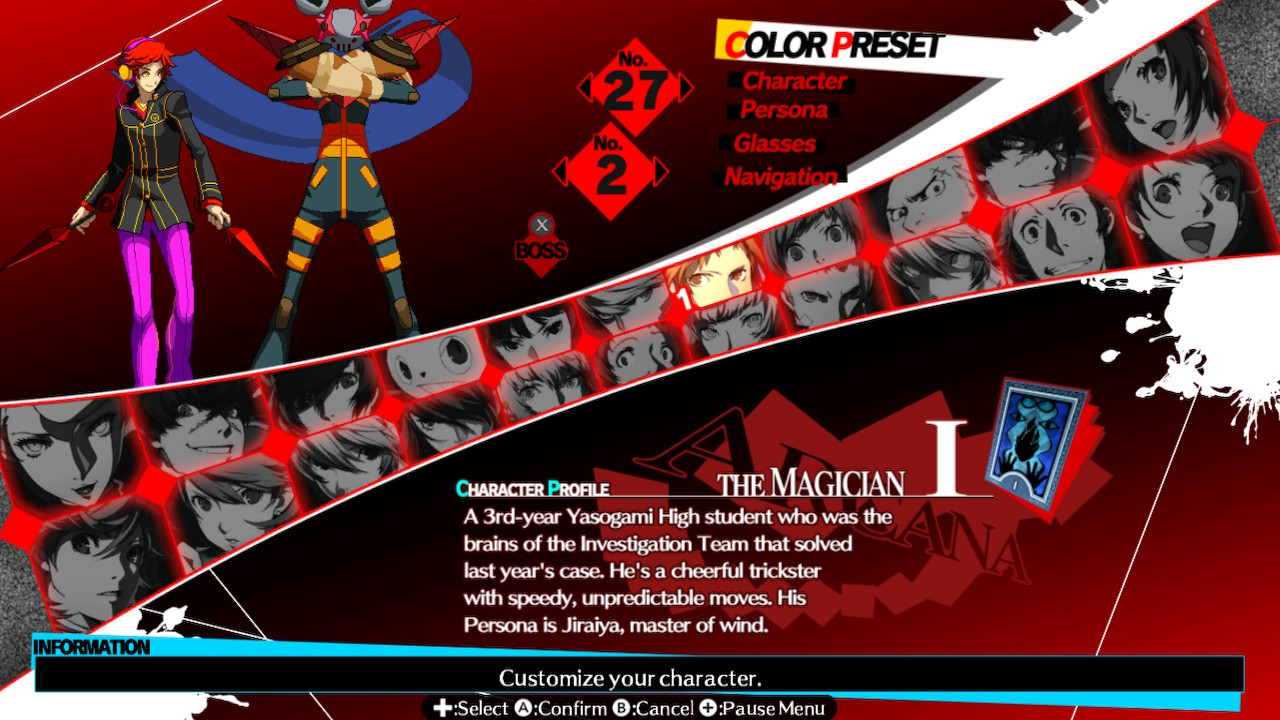
As previously mentioned, this game largely uses characters featured in Persona 3 and 4 but also features original characters like Arena’s Labrys and newcomer antagonist Sho and his alternate personality, Minazuki. The entire cast features unique personalities befitting a Persona game, with their interactions in Story Mode being enjoyable, even reacting to their aptly-given nicknames as you might expect they would. These characters are brought to vibrant life on the battlefield, such as the cartoonish Teddie’s wacky attacks or Rise Kujikawa, previously only a support character, joining the battlefield and slapping the enemy around. Combined with their shadow variants, there are 37 characters you can play as.
Each character accommodates playstyles for gamers of varying levels of experience, and ultimately not all are fully approachable for brand new P4AU players. Characters like Sho, Yu, Yosuke, Rise, Marie, Chie, and Teddie can be picked up and played rather quickly. But many characters feature specific abilities in a battle that you must manage, and this can prove distracting and difficult for newcomers. One example is Junpei Iori from Persona 3, who has a baseball scorecard above his SP gauge, where if you hit the enemy enough times you’ll load the bases and score a run, boosting your damage. But if you get hit, you’ll accumulate “outs”, and after 3, you’ll have to restart your counter to try and get your boost.
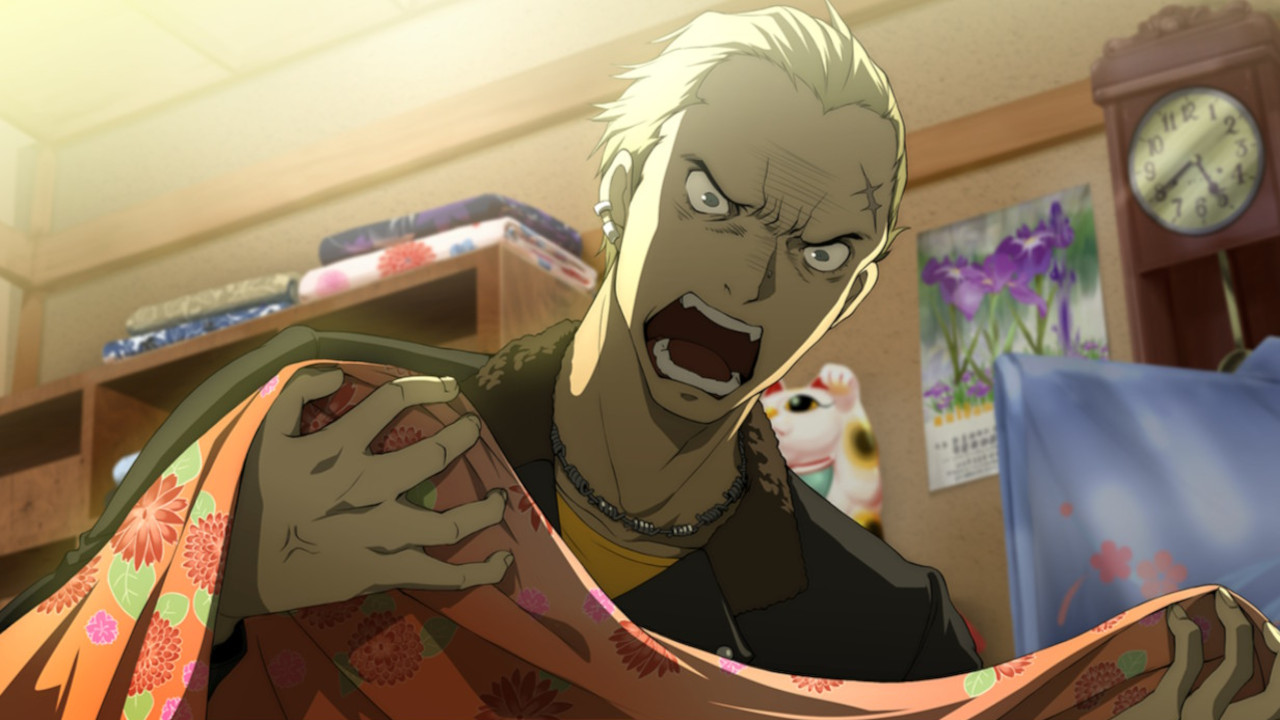
This isn’t to say that certain characters are unplayable due to their features. In reality, it’s anything but, as Junpei is tons of fun to play and you can still win matches without accumulating these boosts. Kanji Tatsumi is a painfully slow character to move around with, but has powerful, punishing mid-range attacks that stop faster opponents in their tracks. Plus, the guy wields chairs as if he were Fire Emblem’s Hector cutting down foes with his ax, and can taunt players like nobody’s business. Even if you end up losing, it’s really fun to try different characters.
Unique Modes
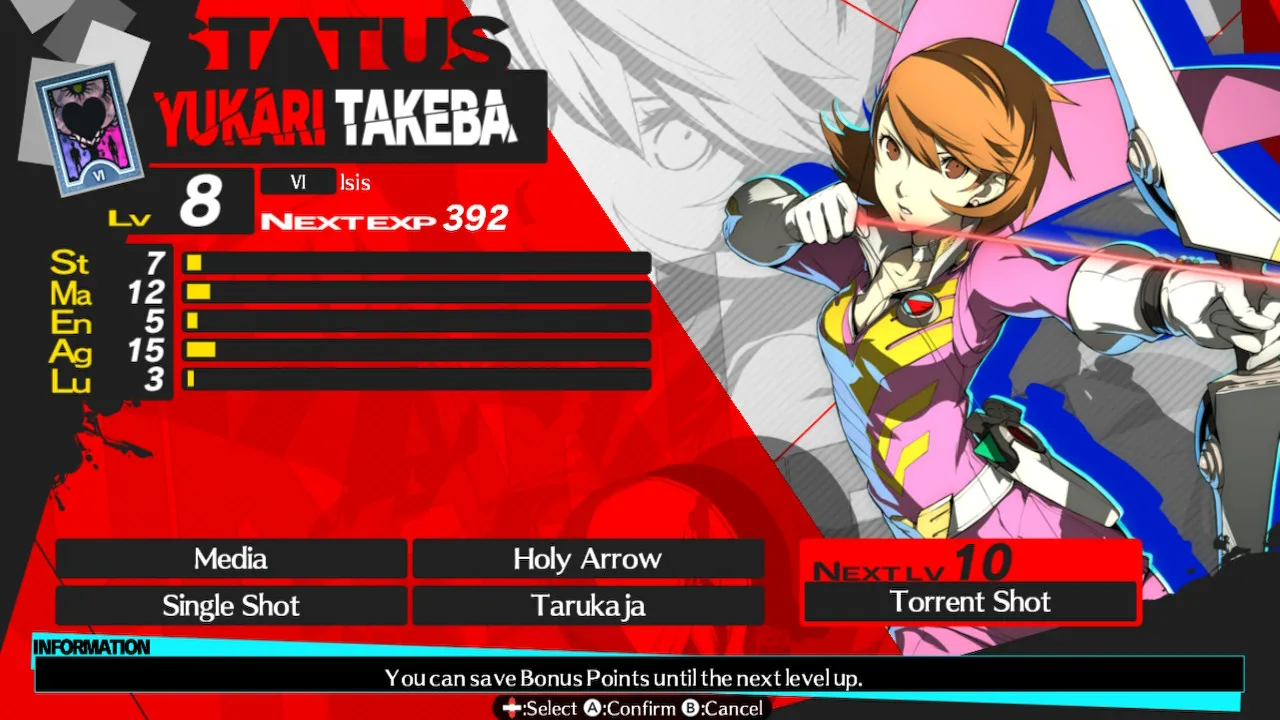
On top of the obligatory story, arcade, and versus features, P4AU packs in other content, the most notable of which is the Golden Arena mode. In many ways, this makes the game shine for the Persona and general RPG fans that don’t play fighting games as often. The reason for this is simple, you play through sets of 5 1-round battles, fighting a boss character in the 5th one, as part of an ongoing gauntlet that scales in difficulty, and each victory awards you experience points.
Every 5 you clear is a checkpoint along the path, with each difficulty setting scaling up from 100 to 200, 400, and eventually infinite at the highest setting, as well as an event course, where during a limited time you can clear it for a unique skill to add to your character. You can play through this mode with any character, and you can level them up separately, with stat-building elements strongly reminiscent of mainline Persona games but geared towards how they’re implemented in this fighting game. The result is a surprisingly addictive amount of replayability, in how you can build whichever character to be however strong you wish them to be.
They will each have stat growths that play well to their respective playstyles, but you can also spend the points you gain from level gains however you wish. If you want to push Sho to be on the most extreme hyper-offense end of things as his playstyle accommodates, that’s great, but you could also make him incredibly bulky and build up his SP quicker too. You can customize your characters in powerful ways through this mode, and the sheer amount of time you can spend on this can easily dwarf that on other modes, especially if you’re in it for the single-player experience.
The Issues
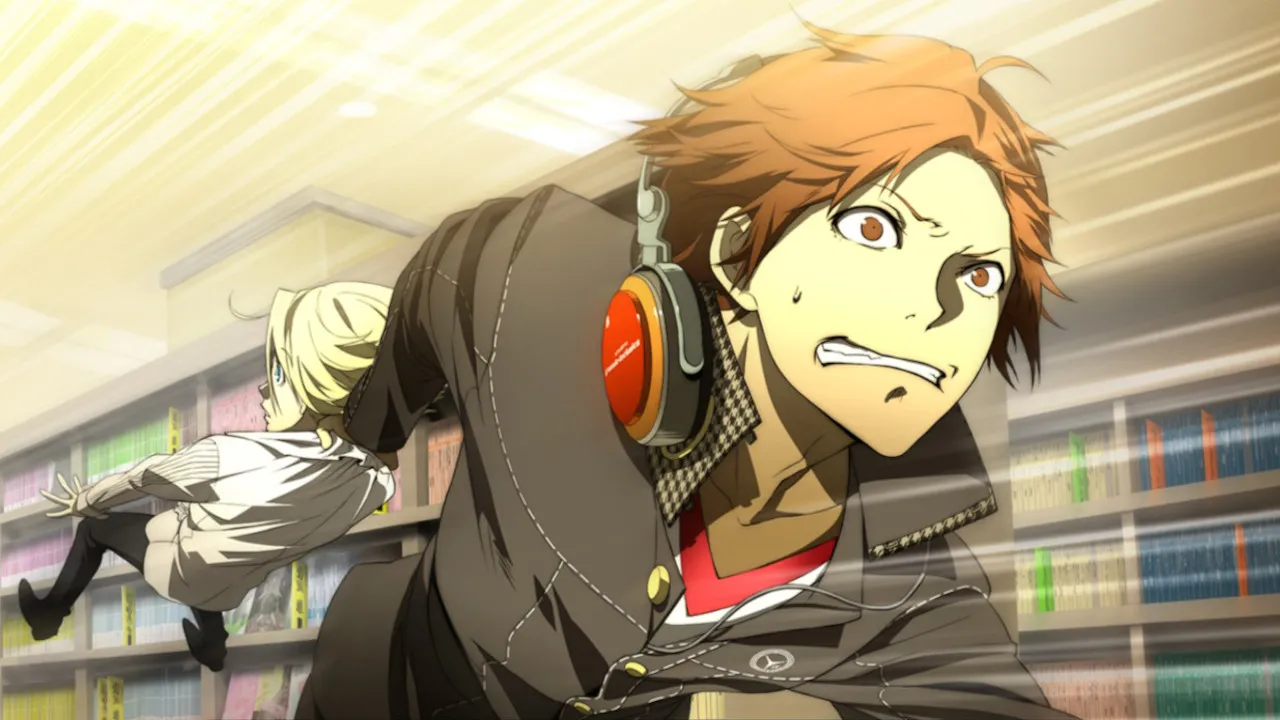
Persona 4 Arena Ultimax is, by its genre and spinoff from a JRPG, rather niche. This isn’t an issue in itself, but the two overlap their known features in ways that can somewhat clash, not ruining the experience overall but something hard to dismiss.
The Story Mode is easily the only offender in this, as it blends the excellent characterization and writing of multiple original Persona stories, with small 1-round matches following several dialogue scenes. This in itself isn’t a terrible thing, but the story segments are lengthy much like any Persona game, and more for the franchise fans who want to passively enjoy the game. This, combined with the matches being few and barely any distinctive ones to truly separate from just playing Arcade Mode, makes enjoying the story a bit of a grind for the fighting game players.
You’re also required to play through the story modes to unlock even more stories, which are genuinely compelling, but time-consuming. You can even turn on auto-battle, which does help if you want to just absorb the story without having to then focus on battles (especially for those who have difficulty playing the game). It’s not an issue with the quality of the writing or the story, as it’s surprising how well Ultimax approaches even things like the Spot the Imposter tropes that come up when characters fight their shadow versions. It’s just a matter of lengthy exposition that sometimes lacks concision.
The Verdict
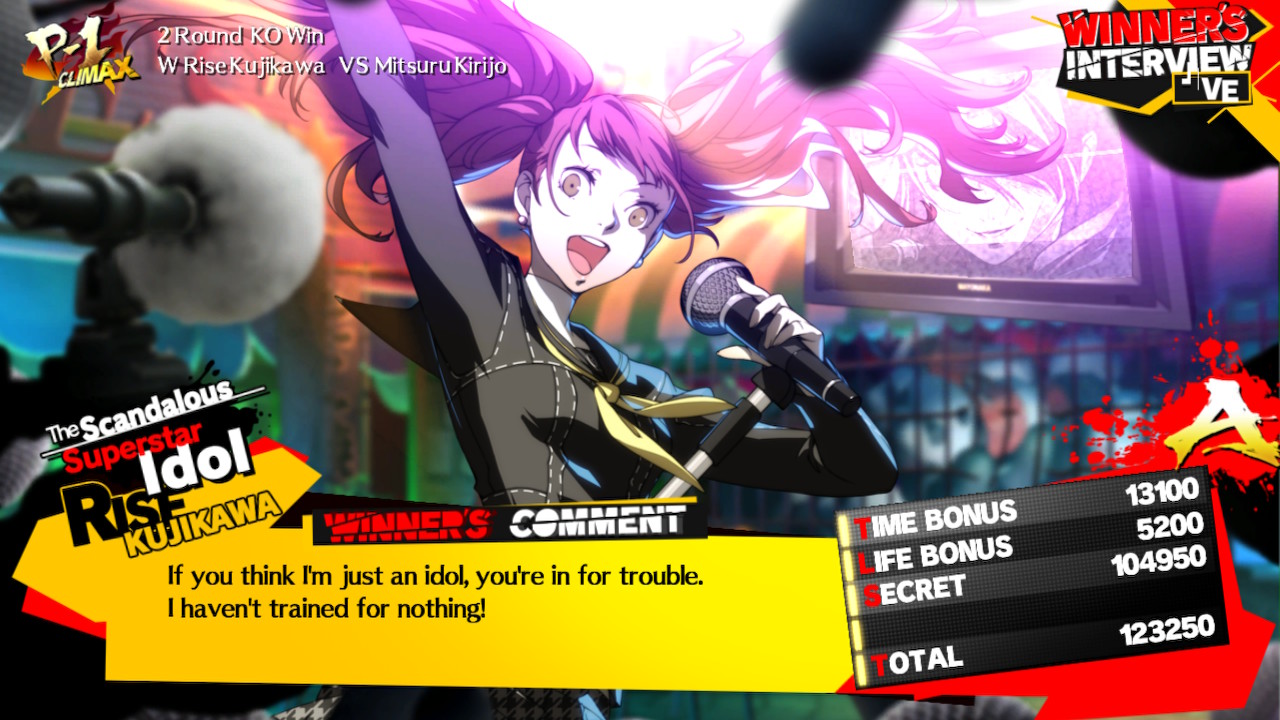
Persona 4 Arena Ultimax is an exceptional fighting game in its own right, with enough unique features in its gameplay and additional modes to set it apart. The story may have some fluff and tropes that are hard to look past, but if you do, you see great characters being faithfully rendered in the writing, as well as how they act on the battlefield. Moreover, this is an excellent port that should perform great for fans of hardcore fighters with a unique edge, and Persona fans on Nintendo and Steam who can now potentially even play the game on the go. The best part is, if you missed out on Arena, this is the definitive experience with more balanced gameplay, and you can even play its story in this.
Despite this game having moments where more experienced players could easily pull off oppressive combos and keep you locked in the corner, there are ways to break out of those attacks and retaliate while enjoying yourself. The game has a home in the competitive fighter circles but also is a rich, rewarding experience for Persona fans and has aged very well. It’s also refreshing for players who want to enjoy a robust fighting game that doesn’t rely on decades-old gimmicks and bleeding-edge 3D graphics to cover up shallow gameplay. With this updated release coming to 3 of the most massive install bases in all of home gaming, it’s a great opportunity for newcomers and veterans to check this one out again.




